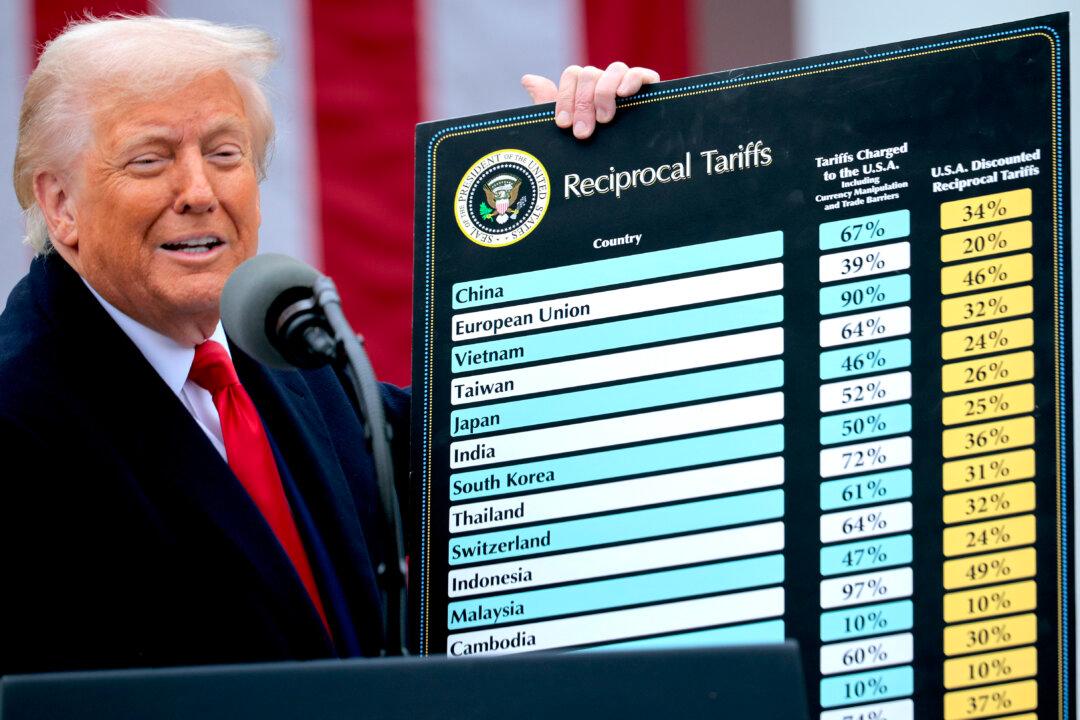WASHINGTON—The U.S. economy expanded at a 3.5 percent annual rate in the third quarter, as consumer spending strengthened. The growth came in above the Wall Street expectation of 3.3 percent.
According to the “advance” estimate released by the Commerce Department on Oct. 26, the main drivers of growth in the third quarter were personal consumption expenditures, private inventory investment, and government spending.
While the reading came lower than the 4.2 percent pace in the second quarter, it still marked the strongest back-to-back quarters of growth since 2014.
Consumer spending—which accounts for about 70 percent of the economy—recorded a 4 percent increase, the highest since the fourth quarter of 2014.
And the government spending surged 3.3 percent—the highest since 2016. National defense outlays grew by 4.6 percent. State and local spending also surged at its fastest pace since 2016.
In addition, inventories had the highest contribution to the GDP since early 2015.
The growth of 3.5 percent is “quite solid and almost Goldilocks,” said David Dietze, chief investment strategist at Point View Wealth Management. “Not so strong as to provoke rapid Fed tightening, but not weak enough to bring out recession fears.”
The report included several warning signs, however, that could potentially be a drag on the economy in the months ahead.
Trade data was one of the weak spots, with exports declining 3.5 percent and the imports rising 9.1 percent in the third quarter.
The housing sector also was troubling, with a contraction of 4 percent. This was the third consecutive decline. According to analysts, the industry is slowing amid higher prices and rising mortgage rates.
“The report shows strong growth still on trend with consumption better than expected. Housing remains a drag, however, as rates rise,” Citi economists wrote in a note for institutional clients.
The business spending growth, another weak spot, slowed down to 0.8 percent, with spending on structures going down as much as 7.9 percent.
“While business spendings vary substantially quarter over quarter, the slow down came earlier than expected by many economists as a sign of the fading impact of corporate tax cuts and fiscal stimulus,” said Stoyan Panayotov, CEO at Babylon Wealth Management.
“In addition to tax reform effects, government spending quickened at a pace not seen since right after the financial crisis,” said Max Gokhman, head of asset allocation at Pacific Life Fund Advisors.
“While the government’s impetus for stimulus was to rally corporations to spend, business investment has actually fallen from the pace it maintained last year. This may be signaling a slowdown ahead as transitory effects from tax reform fade and monetary conditions tighten in earnest, perhaps in part due to the inflationary effects of the trade war.”
Consumer Spending to Continue
According to the recent Commerce Department data, the aggregate household saving rate was revised up to 6.7 percent of disposable income.The higher level suggests that consumers today are well positioned to maintain or even increase consumption, said Federal Reserve Vice Chairman Richard Clarida, in his first public remarks on Oct. 25 at the Peterson Institute event.
This is contrary to the previous economic expansion from 2001 to 2007, he added, when consumers were borrowing to maintain consumption while their income growth weakened.
“To me, at this stage in the business cycle, a historically high household saving rate is a tailwind for the economy, not a headwind. And, of course, recent reductions in personal income tax rates are also a tailwind for the economy,” Clarida said.
Strong consumer spending was driven by historically low unemployment, rising wages, record high consumer sentiment, and lower tax rates, according to Panayotov.
“I believe the momentum of growing consumer spending will continue through the Q4,” he said.





